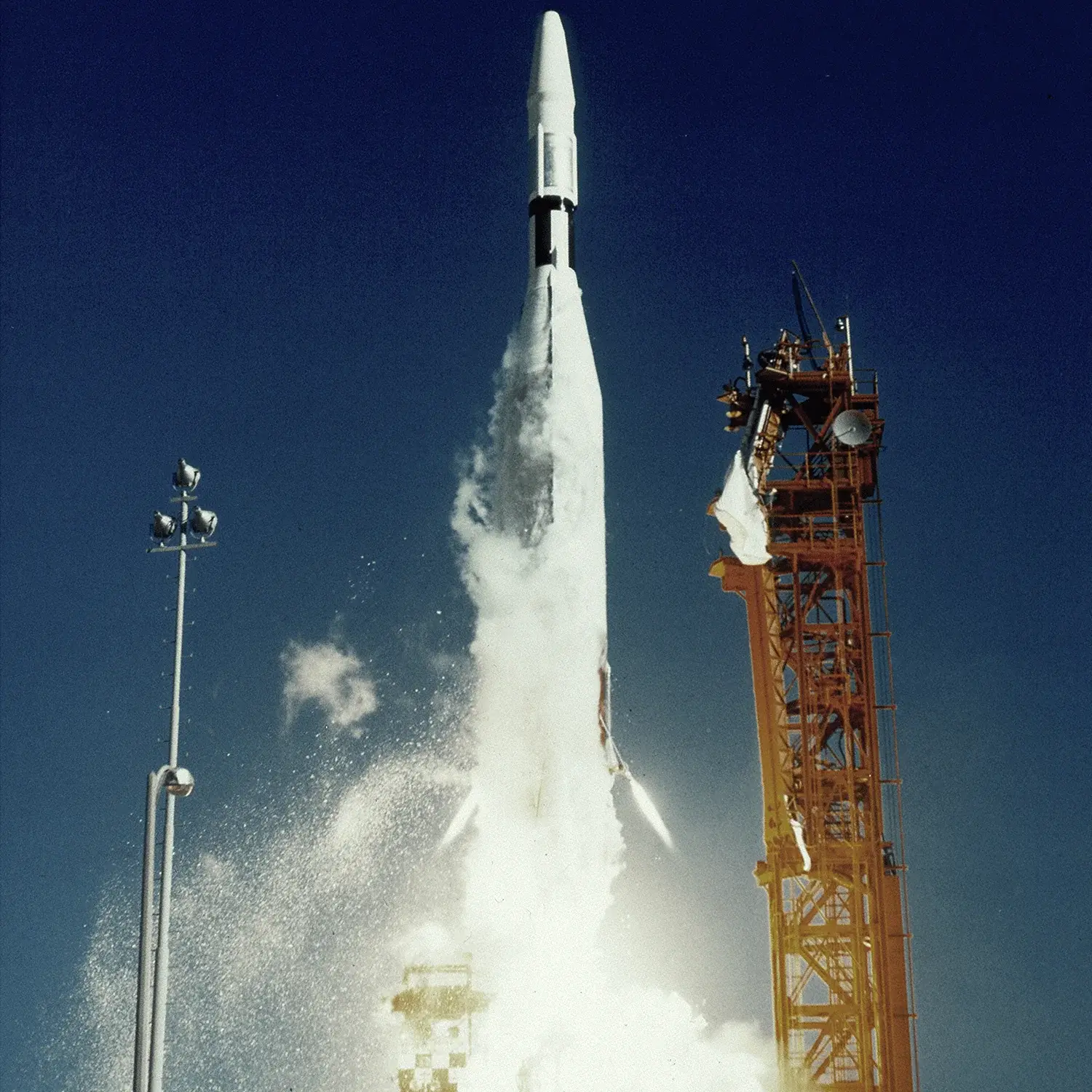Midas 6
Launch Failure
Liftoff Time (GMT)
20:36:00
Monday December 17, 1962
Mission Details
Launch Notes
Hydraulic rise-off disconnect failed at liftoff, resulting in loss of booster engine hydraulics fluid. Vehicle self-destructed T+80 seconds.
Midas 6
The MIDAS Series 3 (Military Defense Alarm System) satellites, MIDAS 6, 7, 8, and 9, were the third development models for the MIDAS early warning system. The Series III carried an improved Aerojet-General infrared payload. It featured a Bouwers concentric telescope with an 8-inch aperture. The detector array on the surface of the focal-plane assembly contained 184 lead sulfide detectors arranged in eight vertical columns of 23 detectors each which provided complete vertical coverage of a 24-degree 58-minute field of view. The 2.7-micron system provided both spectral and spatial background rejection, and emphasized boost phase detection of missiles in the "Atlas class." The telescope rotated on its spin table at 6 rpm, like its Baird-Atomic predecessor. The basic spacecraft remained unchanged from the Series II, except for reliability upgrades. The Agena-B upper stage of the Atlas-LV3 Agena-B launch vehicle was used as the spacecraft bus and provided power and attitude control to the MIDAS payload. Two deployable solar arrays were mounted on the aft equipment rack of the Agena-B to provide power. On 17 December 1962, MIDAS 6 was launched, but the booster vehicle veered off course after 80 seconds.
1 Payload
Rocket

Launch Site
Stats
Atlas-Agena
24th
Mission
13th
Mission of 1962
1962
79th
Orbital launch attempt
